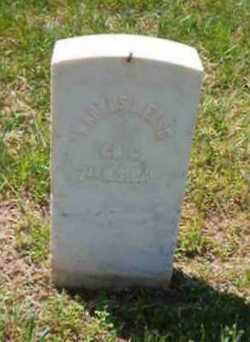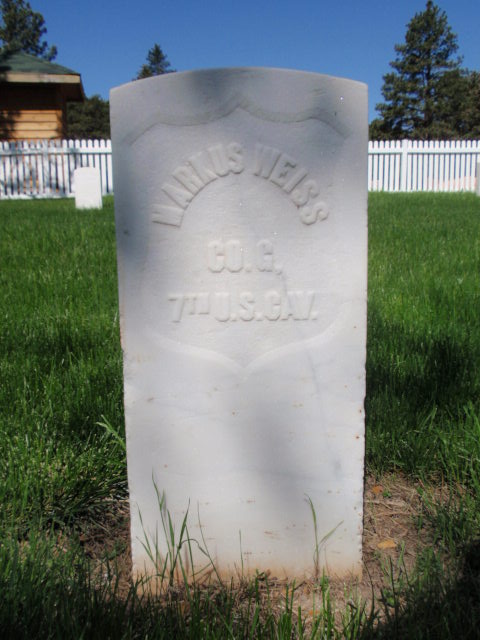Born in Caban, Hungary, he enlisted on August 17, 1866, in Company C, 7th Cavalry, and deserted in April 1867, to return in August 1867. He deserted again on May 20, 1869, to surrender back to military control on October 31, 1873. He was restored to duty without trial and time lost by desertion made good. He was honorably discharged on January 27, 1876, and reenlisted on February 27, 1876 in Shreveport, LA, where he was assigned to Company G, 7th US Cavalry. He had gray eyes, brown hair, a fair complexion, and was 5 feet 8 inches tall. In July 1876, he participated in the Battle of the Little Big Horn, and fought with Company G, in the valley and hilltop fights, under Major Reno, surviving the battle. On July 28, 1876, when the unit was relieved by soldiers under General Terry, the surviving members of the 7th Cavalry were required to bury the bodies of Custer's Battalion on the field of battle - most of them were buried where they fell. In 1878, the bodies were relocated to a central grave located at the top of Last Stand Hill.
Born in Caban, Hungary, he enlisted on August 17, 1866, in Company C, 7th Cavalry, and deserted in April 1867, to return in August 1867. He deserted again on May 20, 1869, to surrender back to military control on October 31, 1873. He was restored to duty without trial and time lost by desertion made good. He was honorably discharged on January 27, 1876, and reenlisted on February 27, 1876 in Shreveport, LA, where he was assigned to Company G, 7th US Cavalry. He had gray eyes, brown hair, a fair complexion, and was 5 feet 8 inches tall. In July 1876, he participated in the Battle of the Little Big Horn, and fought with Company G, in the valley and hilltop fights, under Major Reno, surviving the battle. On July 28, 1876, when the unit was relieved by soldiers under General Terry, the surviving members of the 7th Cavalry were required to bury the bodies of Custer's Battalion on the field of battle - most of them were buried where they fell. In 1878, the bodies were relocated to a central grave located at the top of Last Stand Hill.
Advertisement
Explore more
Sponsored by Ancestry
Advertisement



